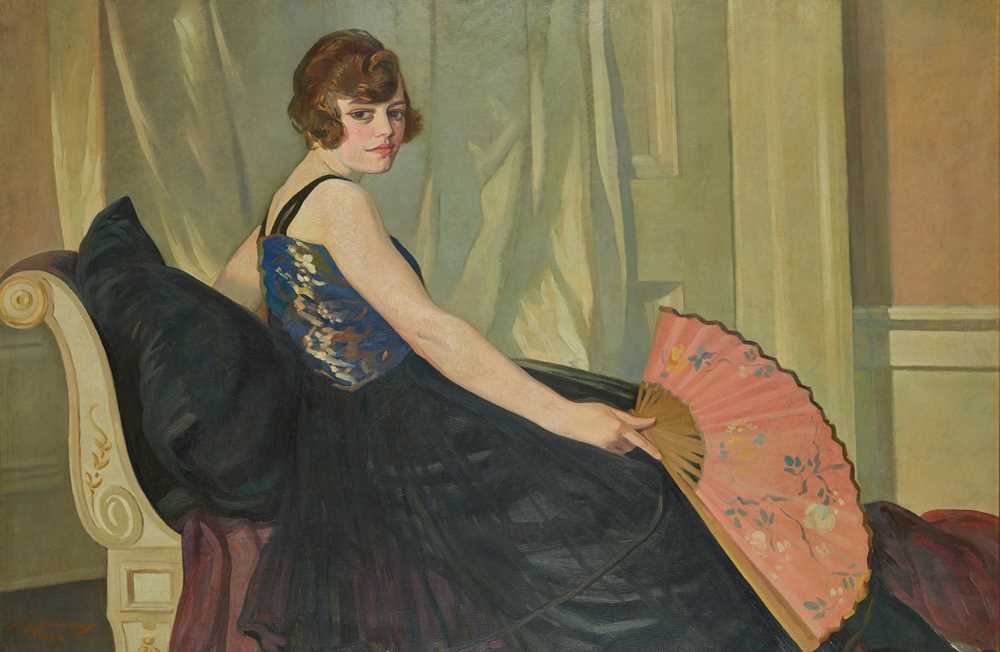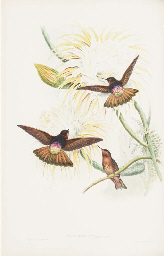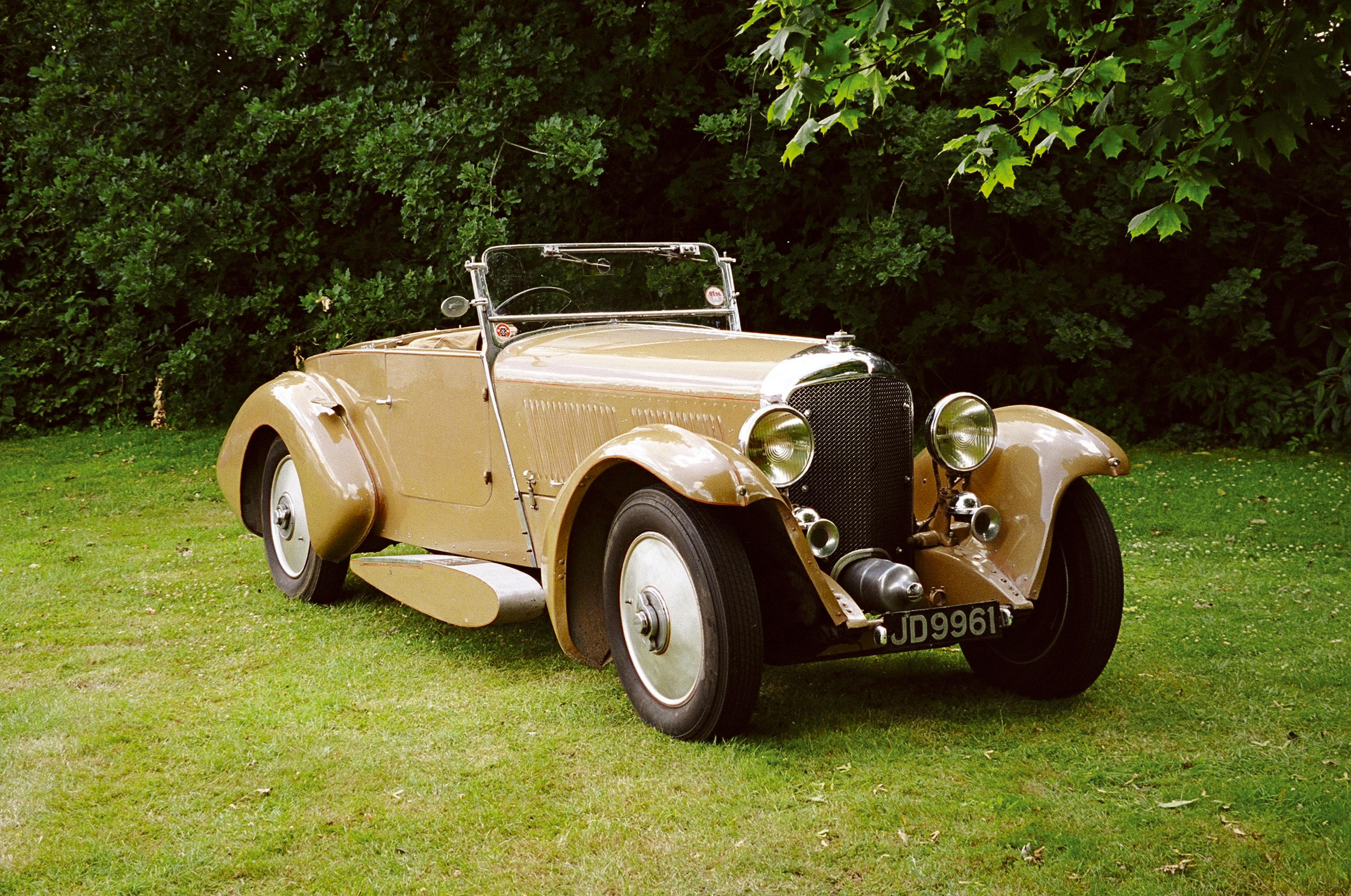On display at Taylor Galleries Louis le Brocquy HRHA (1916-2012) Cavanagh Aubusson wool tapestry, 382 x 386cm (150½ x 152'') Signed and dated (19)'74 Unique Produced by Tabard Freres & Soeurs, France No:2031 (label verso) Provenance: Privately commissioned from the artist for Setanta House, Dublin Tapestry art was having somewhat of a renaissance in the twentieth century, becoming a medium, which was increasingly attractive to progressive modernist artists. French artist Jean Lucrat had pioneered this approach in tapestry design some years earlier, developing a technique, which prioritised the material as the guiding principle for the design rather than an attempt to make the tapestry conform to the characteristics of the painted image. Le Brocquy was drawn to Lucrat's example, whereby he could create very detailed and colour coded templates that the weavers would follow with exact precision. He rejected the painted cartoon in favour of a full-scale linear design. This allowed him to directly indicate each transition of colour and tone in the woven fabric. He had already collaborated on numerous occasions with the workshop of Tabard Frères et Soeurs in the Aubusson region. In 1973 he resumed working on a new series based on the themes and imagery of The Táin. This resulted in the Cúchulainn tapestries, which emerged in various iterations over the following decades. The Milles Tetes (Thousand Heads) series is a distinctive example of both Le Brocquy's sustained interest in representing the human head and the visual effect of inverting colour and tone. This work is a unique piece, commissioned for a private client, which draws on the similar design tropes of the series. The stylized heads arranged in rows, suggestive of some massing force, are distinctive, drawn with their own features and characteristics. Yet through their repeated presence across the woven surface, they blend into one another to create 'a mass of human presence' (Dorothy Walker Louis Le Brocquy Dublin, 1981, p.51). The dark austerity of the Tain's illustrations are replaced here by vibrant colours. The shift in tone from bold primary colours in the centre to paler hues creates a dramatic effect. In this work, Le Brocquy was able to explore the interdependence of form, colour and narrative content on a monumental scale. It is an extremely expressive work in which he has layered the colours, to exemplify the full spectrum. The background shifts from black to varying degrees of grey and white, which is then layered with primary colour tones. These move across the tapestry from paler hues in arrangement of blue, green, yellow and red. The longer you observe it, the more visually receptive it becomes. As Le Brocquy remarked on this effect on the human eye, "Further to the emotional character of single and interrelated colour, lies the magic of colour inversion. Staring fixedly at a colour or colours, the saturated eye - shifting to a white surface - precisely inverts those colours both in hue and tonally. A retinal 'memory' emerges inverted, an entirely new perception as contrary as night from day". (Le Brocquy, 'Artist 's Note', exhibition catalogue Louis le Brocquy Seven Tapestries 1948-1955Dublin: Dawson Gallery; Belfast: Ulster Museum 1967) Niamh Corcoran, November 2021
On display at Taylor Galleries Louis le Brocquy HRHA (1916-2012) Cavanagh Aubusson wool tapestry, 382 x 386cm (150½ x 152'') Signed and dated (19)'74 Unique Produced by Tabard Freres & Soeurs, France No:2031 (label verso) Provenance: Privately commissioned from the artist for Setanta House, Dublin Tapestry art was having somewhat of a renaissance in the twentieth century, becoming a medium, which was increasingly attractive to progressive modernist artists. French artist Jean Lucrat had pioneered this approach in tapestry design some years earlier, developing a technique, which prioritised the material as the guiding principle for the design rather than an attempt to make the tapestry conform to the characteristics of the painted image. Le Brocquy was drawn to Lucrat's example, whereby he could create very detailed and colour coded templates that the weavers would follow with exact precision. He rejected the painted cartoon in favour of a full-scale linear design. This allowed him to directly indicate each transition of colour and tone in the woven fabric. He had already collaborated on numerous occasions with the workshop of Tabard Frères et Soeurs in the Aubusson region. In 1973 he resumed working on a new series based on the themes and imagery of The Táin. This resulted in the Cúchulainn tapestries, which emerged in various iterations over the following decades. The Milles Tetes (Thousand Heads) series is a distinctive example of both Le Brocquy's sustained interest in representing the human head and the visual effect of inverting colour and tone. This work is a unique piece, commissioned for a private client, which draws on the similar design tropes of the series. The stylized heads arranged in rows, suggestive of some massing force, are distinctive, drawn with their own features and characteristics. Yet through their repeated presence across the woven surface, they blend into one another to create 'a mass of human presence' (Dorothy Walker Louis Le Brocquy Dublin, 1981, p.51). The dark austerity of the Tain's illustrations are replaced here by vibrant colours. The shift in tone from bold primary colours in the centre to paler hues creates a dramatic effect. In this work, Le Brocquy was able to explore the interdependence of form, colour and narrative content on a monumental scale. It is an extremely expressive work in which he has layered the colours, to exemplify the full spectrum. The background shifts from black to varying degrees of grey and white, which is then layered with primary colour tones. These move across the tapestry from paler hues in arrangement of blue, green, yellow and red. The longer you observe it, the more visually receptive it becomes. As Le Brocquy remarked on this effect on the human eye, "Further to the emotional character of single and interrelated colour, lies the magic of colour inversion. Staring fixedly at a colour or colours, the saturated eye - shifting to a white surface - precisely inverts those colours both in hue and tonally. A retinal 'memory' emerges inverted, an entirely new perception as contrary as night from day". (Le Brocquy, 'Artist 's Note', exhibition catalogue Louis le Brocquy Seven Tapestries 1948-1955Dublin: Dawson Gallery; Belfast: Ulster Museum 1967) Niamh Corcoran, November 2021





/74329/Internet%20Image%201.jpg)









Try LotSearch and its premium features for 7 days - without any costs!
Be notified automatically about new items in upcoming auctions.
Create an alert